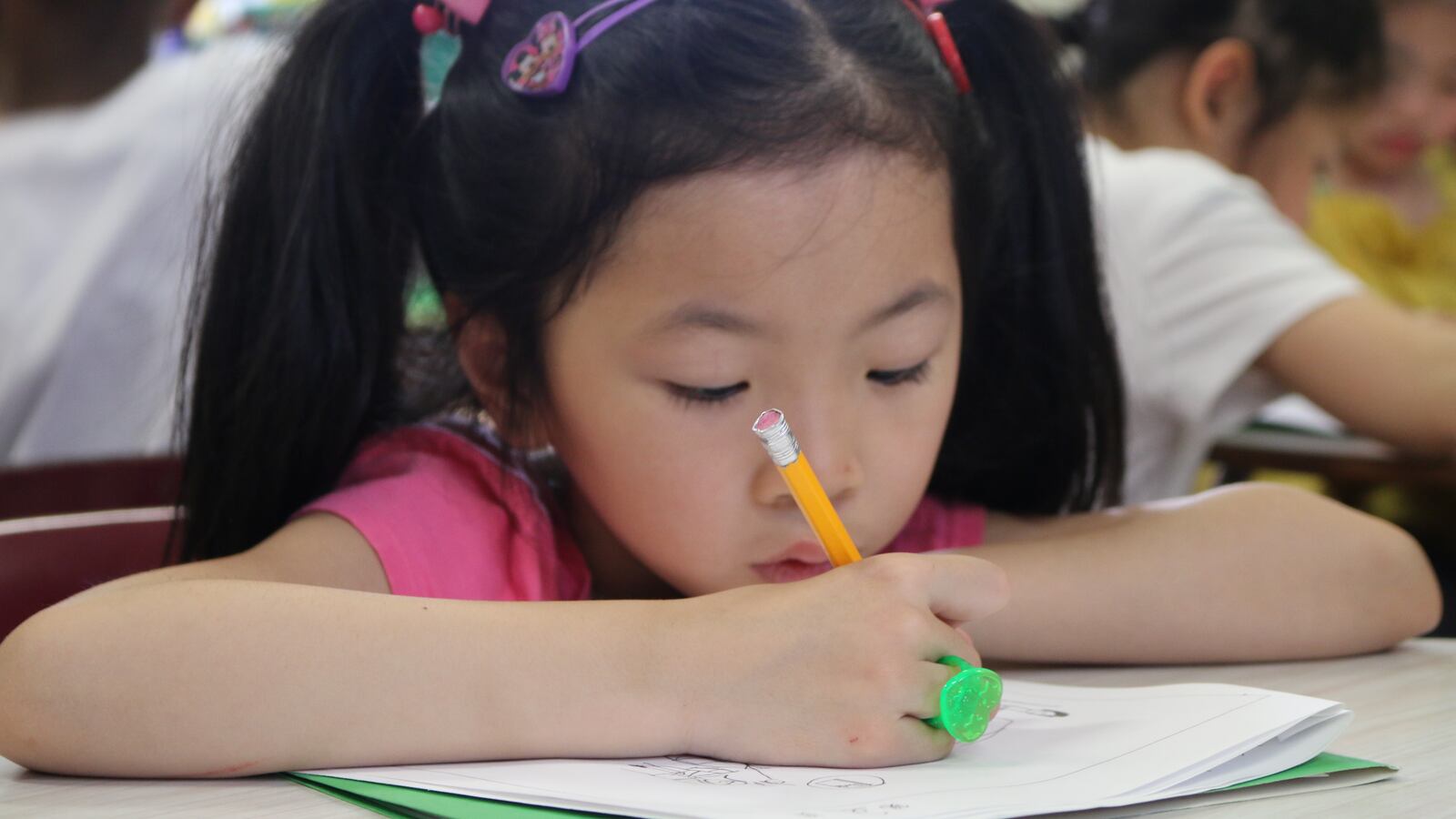New York City is adding almost 50 bilingual education programs, in a move that could help better integrate schools and also boost learning for students who are learning English as a new language.
The expansion continues an aggressive push under the de Blasio administration to meet a pledge to the state to offer more options for students who are learning English. It also marked the first major policy announcement by Chancellor Richard Carranza, who, in his first month on the job, has often highlighted his own experience as an English language learner when he entered school speaking only Spanish.
Announcing the new programs at P.S. 1 in Manhattan’s Chinatown, Carranza said the city is trying to send a message to immigrant families that their children are welcomed in New York City schools.
“It’s a matter of social justice for many of our students,” Carranza said. “It’s not a luxury. It is our duty.”
Dual language programs are one way the city has sought to make schools more diverse, with parents often willing to travel to different neighborhoods to give their children the chance to learn a new language. At P.S. 1, for example, a Mandarin program also enrolls many black and Hispanic students. Carranza squatted at a small table where students taught him to spell his name in Chinese characters, and one boy corrected his pronunciation of “thank you.”
“We want to make sure these programs are open to a real diversity of our students,” Carranza said.
The latest additions include 32 dual language programs, which split instruction between English and another language so that students learn both. Another 16 are transitional bilingual programs, which gradually shift instruction from the students’ native language to English.
With the expansion, the de Blasio administration has grown its bilingual education portfolio by more than 200 programs — including more dual language options in prekindergarten. The new programs expand on offerings in 10 different languages, including an Albanian program at P.S. 105 The Senator Abraham Bernstein School in the Bronx that officials say is the first of its kind in the city and the country.
Lucas Liu, an advocate for bilingual education who sits on the Community Education Council in District 3, said the expansion is “good news.” But he also hopes the city will also focus on sustaining the language programs it already has. Liu said funding can often be a challenge, especially in dual language classes, since native speakers often don’t qualify for extra city funding the way English learners do.
“I’m not looking for quantity. I’m looking for quality,” he said.
The city has been under pressure to improve education for its more than 150,000 English language learners, who make up almost 14 percent of all students. In New York City, and nationally, students who are learning English are much less likely to graduate from high school or pass standardized tests.
In 2014, city leaders pledged to provide bilingual classes to every student who is learning English by next year — a promise made after being put on a state “corrective action” plan under the previous administration. The education department on Thursday could not say whether it would meet that deadline, but hinted that finding enough qualified teachers has been a stumbling block.
“I think we’re working towards that goal,” said Yalitza Vasquez, a senior executive director in the department’s Division of English Language Learners and Student Support. “But what we need is to identify teachers.”
Christopher Eustace, the longtime principal of P.S. 105 in the Bronx, was able to build the city’s Albanian program by thinking ahead to solve that problem. He began noticing some years ago that more and more of his students came to school speaking Albanian. So, whenever he could, Eustace hired teachers and office staff who speak the language.
Eventually he had laid the groundwork for a dual language program, pulling from teachers he already had on staff. He said the education department is helping with tuition reimbursement for other Albanian-speaking teachers who are working towards earning certifications to teach English learners.
“It’s something about knowing the importance of, while still learning English, maintaining that native language,” he said. “It helps you connect as a person.”

